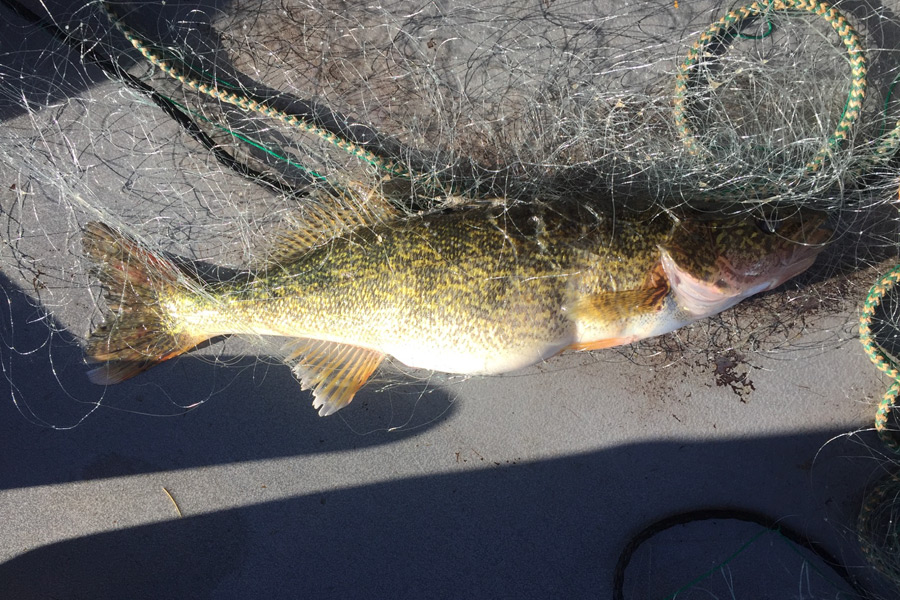State wildlife officials have confirmed that two walleyes caught in Swan Lake last fall were illegally transplanted, quelling concerns that the non-native species spawned in the lake.
Fish, Wildlife and Parks biologists reported catching the walleye in Swan Lake in October during a gill-net operation, marking the first time the species has been discovered in the lake and raising concerns about the illegal introduction of yet another non-native fish in Montana’s waters, according to Mark Deleray, Region One fisheries manager for Montana Fish, Wildlife and Parks.
Recent microchemistry analysis of the inner ear bones of the fish indicates they were introduced to the lake sometime last year.
Deleray said it’s highly likely the fish originated from an illegal introduction, a trend that has wreaked havoc on hundreds of water bodies across the state, costing hundreds of thousands of dollars to rectify.
In most cases, the illegal introduction cannot be undone, often leading to lost recreational fishing opportunities, as well as collapsing ecosystems and altered food webs.
The recent case is problematic because walleye are highly predacious and could impact the native bull trout population, as well as the kokanee salmon fishery in Swan Lake, Deleray said. He estimated nearly 600 illegal introductions have occurred in 250 bodies of waters in the state, and roughly half of those incidents were in Northwest Montana.
With laboratory analysis of the fish’s ear bones, or otoliths, complete, scientists now know the fish were not spawned in Swan Lake.
Otoliths contain a unique fingerprint of the water chemistry where the fish swims on a given day, and can be used to map the entire life history of a fish within a lake or river network.
“We see a significant change over time in the chemical profile of the otoliths, indicating that the two walleye were recently introduced into Swan Lake,” says FWP Fisheries Biologist Sam Bourret. “It appears that the walleye were introduced in 2015.”
If the analysis on the recently caught walleye had identified Swan Lake as their natal water, it would mean they came from a breeding population.
Biologists are analyzing fish from other areas to determine the origin of the transplanted walleyes.
Already, the analyses have shown that the walleye did not originate in Lake Francis, near Conrad, or Noxon Reservoir.
The reward for information leading to the conviction of whoever is responsible for the illegal introduction is up to $30,000.
Deleray noted that the FWP Commission approved a mandatory kill regulation for walleye in Swan Lake, Swan River, and their tributaries. All walleye caught by anglers must be kept and immediately killed. Walleye must be reported to FWP within 24 hours, and arrangements made for the entire fish to be turned into FWP within 10 days.
Deleray asked anyone with information on who introduced walleye into Swan Lake to call 1-800-TIP MONT. Callers do not need to identify themselves and may be eligible for the cash reward.
